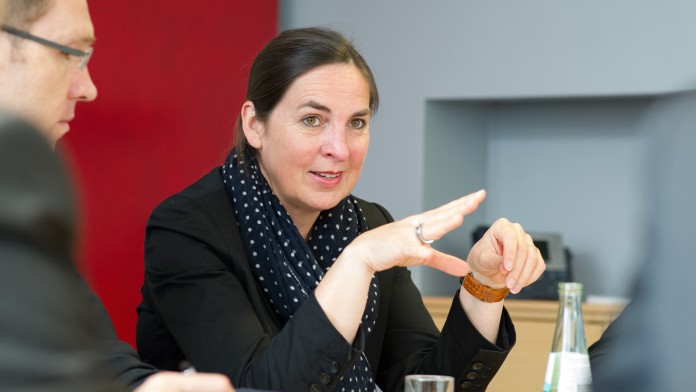Foundations under German law and foundation-like approaches in other jurisdictions have firmly established themselves as a grant-financed funding instrument in Financial Cooperation over the past two decades. Their origins lie in the field of nature conservation. Biodiversity is often high where the capacity to preserve it is low, and incentives for alternative use are high. The establishment of protected areas is intended to establish the conditions for maintaining the wealth of biodiversity and vital ecosystem services.
The effective management of these areas comes with ongoing costs for personnel, equipment and infrastructure maintenance, for instance, and in many cases no long-term, matching financing from domestic budget funds is available. This is where the value of most FC-financed nature conservation foundations lies: the ongoing costs of protected area management can be financed on an enduring and independent basis from the income of the foundation's invested assets. We are currently cooperating with almost 30 foundations or foundation-like entities in the form of endowments or other contributions into their assets, designed as “FC-foundations” in the following. Of these FC foundations, 12 were founded on behalf of the german government. In a cross-cutting evaluation, the FC evaluation unit analysed the added value from a development policy perspective of this institutional approach in FC, with the following results:

Today, the FC foundations show a high level of diversity in terms of their sectoral orientation (the majority of the foundations operate in the nature conservation sector), their geographical focus and their specific legal and content-related orientation. What they have in common is the enduring follow-up, independent of political trends, based on a clear purpose defined by the foundation's organisers using the foundation's assets for the established purpose. Some foundations have assets that can be preserved on an enduring basis (endowment ), while others have assets that must be consumed over a certain period of time ( sinking fund ). The majority of FC foundations are a hybrid form of both types.
Building these institutions requires time and resources and takes years to pay off. The foundations have functioning structures, but the effort required to solidly establish these structures is sometimes underestimated. Governance is usually well structured, but the composition of boards and committees has a strong impact on their functionality. The donors´ claim for control and the autonomy of the institution can result in conflicting objectives. They may also result from the foundation´s indepency, the legitimacy of its actions on a local level and the necessary ownership by the partner countries´ governments. These fields of tension have led to changes in the composition of bodies and committees for some foundations.
The evaluation results show that foundations, not only in the nature conservation sector, can be structured in a targeted manner to adequately address core development policy problems. Thanks to their independent and enduring nature, foundation approaches have also proven themselves in the financial sector. Foundations can be used to pilot innovative approaches and scale them up if successful, or to convert proven approaches from classic FC into enduring structures. In the nature conservation sector and particularly in fragile contexts, FC foundations, as independent institutions, enable long-term, effective cooperation for FC and at the same time offer reliability for the beneficiaries – unaffected by political trends, realignments and reorientations which would otherwise have a much greater impact on cooperation from state sources.
amount of financial commitment from other donors. There are several reasons for this, including insufficient funds contributed by smaller donors to make significant contributions to the foundation’s assets, but also the visibility requirements of larger donors, which may lead them to develop their own structures. Private endowments to the foundation's assets are also usually made to a lesser extent than hoped.
Charitable foundations generally have a good reputation, and the establishment of foundations offers Germany a high level of visibility as a donor country. This motive is certainly also the reason for the existence of several foundation-like approaches from different operators with similar goals at a global level. What remains unclear is whether duplications can be adequately avoided and synergies gained. In particular, regional foundations create an institutional framework that can facilitate coordination between various states, providing the opportunity to address cross-border issues.

The core business of the foundations is achieving their stated objectives, using both investment income and funds intended for consumption. Particularly in low interest rate environments, the increasingly observable hybrid form of a foundation as a mixture of endowment and sinking fund has proven worthwhile, as they do not depend exclusively on the interest rate developments in the capital market. This means that higher funds can be deployed on an ongoing basis, hence guaranteeing the much-needed reliability and continuity – even if ongoing support at this level does depend on the continuing provision of endowments. In general, the FC foundations have achieved appropriate capitalisation levels in international comparisons, and can effectively pursue their objectives. FC is and usually continues to be the most significant contributor in the continued existence of the foundations it has established.
In contrast to traditional FC project financing, foundations make a financial contribution to the assets, which are then invested by the foundations in the capital markets to achieve the foundation's objectives. This unique feature requires a closer examination of the investment because the assets of the foundation can be invested in commercial undertakings (or other asset classes) whose activities might serve the foundation's purpose or might run counter to them. The investment of the assets in the capital market can therefore potentially – in a “total impact approach” – be used to promote the strict purpose of the foundation, but must in any case not run counter to it. Evaluation results show that investments are usually not fully synchronised with the foundation’s purpose. All FC foundations take environmental, social and governance aspects (ESG) into account when investing by specifying exclusion criteria in their investment guidelines. However, these are not always directly aligned with the foundation's purpose. More ambitious ESG strategies are often not required when investing, which is usually managed by a professional asset manager. The avoidance of possible negative effects of the investments on the foundation's purpose should be demanded, documented and reported in a more structured manner, and potential for leveraging positive effects from the investments in terms of the foundation's purpose should be considered. In this respect, the FC foundations could make even greater use of their opportunities to identify material opportunities and risks, and incorporate them into capital investments by employing experienced asset managers. This would allow them to take a total impact approach without neglecting their core business.
The efficiency of FC foundations lies in their robust structures with transparent processes and the required level of flexibility in fulfilling their purpose as framework conditions change. Administrative expenses vary significantly, both in absolute terms and in relation to total expenditure, but are difficult to compare given the diversity of the foundations and their tasks. These generally have to be evaluated on a case-by-case basis. Nevertheless, we can observe that the ratio of administrative expenses – i.e. the proportion of administrative expenses in total expenditure – decreases as capitalisation and the life of the foundation increase.
Most of the foundation’s objectives were achieved. Often, ambitious goals were formulated, with long impact chains that leave a large attribution gap between the output and outcome, and especially between the outcome and the impact and the objective of the foundation. General formulations in the foundation's purpose allow a high degree of flexibility, but these must be operationalised to measure objectives. Impact measurement is methodologically challenging for global public assets (such as biodiversity, clean air or ecosystem conservation), which is a reason for the lack of impact-oriented monitoring systems. Nevertheless, scientific studies in nature conservation, for example, demonstrate the effectiveness of protected areas for preserving biodiversity. It is therefore possible and plausible to attribute the contribution of nature conservation foundations to these positive impacts. The evaluation also shows that foundations have a structural impact by promoting standards and quality requirements as well as by establishing and expanding environmental and social management systems.
Due to their structures, established on an enduring and long-term basis, foundations offer the necessary continuity to protect global public assets in particular in the longer term and to scale successful approaches. However, the question of how German FC can withdraw from a foundation is often unclear. Withdrawing would allow a foundation to continue to exist independently or – in the case of a foundation with a sinking fund – to be dissolved without unintended consequences.

The foundation approach has proven its worth in FC, but a critical analysis remains necessary in individual cases. Whether a foundation is established and how it should fulfil its purpose should be based on the existing core issues and the devised solution (form follows function). The structure and governance of a foundation should be based directly on its intended duration and autonomy. The effectiveness and efficiency of foundations established as sinking funds for a limited time horizon seem questionable when there are high requirements for control.
Against the background of the global objectives, especially in the area of biodiversity conservation, we can assume that nature conservation foundations, in particular, will continue to gain in importance. Germany is already playing a leading role here as the leading bilateral financier. FC’s experience shows that foundations can prove beneficial from a development policy perspective as an instrument for long-term and independent financing to protect global public assets.